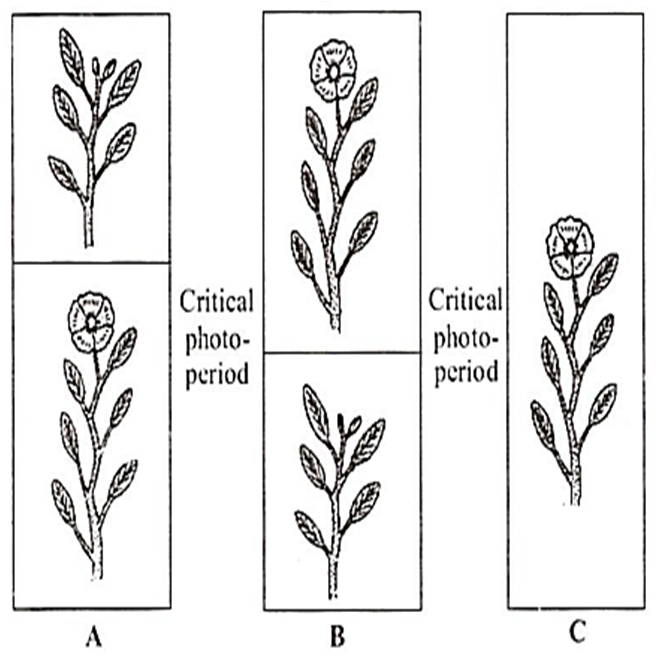 Multiple Choice Questions
Multiple Choice QuestionsAssertion: No secondary growth takes place in monocots.
Reason: Secondary growth is not related with cambium.
If both assertion and reason are true and reason is the correct explanation of assertion.
If both assertion and reason are true but reason is not the correct explanation of assertion.
If assertion is true but reason is false.
If both assertion and reason are false.
Vernalisation is subjected to plants growing in
tropical areas
sub tropical areas
temperate areas
hot areas/arctic region.
The phenomenon that operates in the formation of root or shoot in a callus culture is
differentiation
re-differentiation
de-differentiation
re-juvenation
Which of the following genes do not occur naturally in living organisms
Bt genes
RNAi genes
Cry genes
Endogeneous cytoplasmic defence genes
D.
Endogeneous cytoplasmic defence genes
Bt genes, RNAi genes and Cry genes occur naturally in living organisms.
Bt toxic gene of bacterium Bacillus thuringiensis has been cloned from bacteria, and expressed in plants, to provide resistance to insects without the need of insecticides. The choice of genes depends upon the crop and the targeted pest as most Bt toxins are insect group specific. The toxin is coded by a gene named Cry.
RNAi takes place in all eukaryotic organisms as a method of cellular defence. This method involves silencing of a specific mRNA due to a complementary dsRNA molecule that binds to and prevents translation of the mRNA (silencing).
Abscisic acid is known as the stress hormone because it
breaks seed dormancy
induces flowering
promotes leaf fall
promotes closure of stomata
Which of the following plant growth regulators (PGRs) promotes root initiation, flowering and induced parthenocarpy?
Gibberellin
Auxin
Cytokinin
Ethylene
Refer the given figures on photoperiodism and select the correct option.

| A | B | C |
| no correlation between light period and flowering | long light- exposure period | short light- exposure period |
| A | B | C |
| long light- exposure period | no correlation between light period and flowering | short light- exposure period |
| A | B | C |
| short light exposure period | long light exposure period | no correlation between light period and flowering |
| A | B | C |
| no correlation between light period and flowering | short light exposure period | long light exposure period |
Assertion: Plant growth as a whole is indefinite.
Reason: Plants retain the capacity of continuous growth throughout their life.
If both assertion and reason are true and reason is the correct explanation of assertion
If both assertion and reason are true but reason is not the correct explanation of assertion
If assertion is true but reason is false
If both assertion and reason are false.
